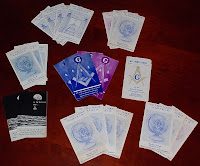This second “On Tap” post concerns the Ninth Manhattan District’s 120th annual Traubenfest held at the German Masonic Park, an autumn wonderland of beer, blondes, and sausages. I had no idea this place existed until I happened to be cc’d on an e-mail advertising this event some weeks previously. Too good to be true, I figured, must be a prank. But it is for real.
As far as I can tell, the lodges in the Ninth Manhattan District own the park, and each lodge owns and operates a building where food and beverages are sold. Some of the buildings are simple structures with a kitchen and some storage space, but others somewhat resemble taverns, or German beer halls. I don’t know what events take place here, or when, but Traubenfest (Grape Festival) is a very well attended and likely highly anticipated event. I know I’m going back.
I can’t name all the lodges of the District, but it includes Allemania 740, Lessing 608, Schiller Lodge, Trinity 12, Von Mensch 765, and I’m sure others. Plus there is the German Masonic Charitable Foundation.
The photos:
 |
| An instant after this photo was shot, a huge ball of flame erupted from the grill. |
 |
| Spaten appears to be the official beer of Traubenfest 2010. And it is good. |
Okay, okay, the photos stink this time. Listen, I had the camera in one hand, a pint in the other, and half a pound of bratwurst in another. And it’s not like you’re paying for the content here!

On a closing note, I attended both Grand Master’s Day and Traubenfest with my next door neighbor. After bending his elbow with a few pints at the festival, he let me twist his arm and bring him to Old ’76 House, yet another historic site in Tappan. It has been a tavern in continuous service since the 17th century; was used to jail Benedict Arnold’s accomplice, Major John Andre; and was frequented by George Washington and other Founders. We left there after a few more drinks with the inspired idea to have yet another drink at yet another historic site where Washington had “refreshed” himself, so we headed home resolved to have a nightcap along the way at Bloomfield Steak and Seafood House, about 30 miles away from Tappan. It is a restaurant now, but it had been a private residence for centuries. Built in 1670, it is the location where Bro. Joseph Bloomfield signed the charter of the Township of Bloomfield (wherever did they get that name?), and where Washington and Bro. Henry Knox once dined during the Revolution. A historical pub crawl. (I wanted to stop at Fraunces en route to Bloomfield, but I had to get him home to his wife.)
































































































































